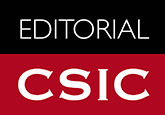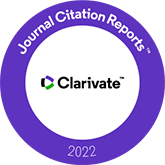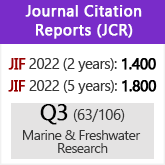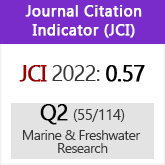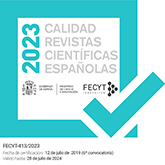Comparing observed and modelled growth of larval herring (Clupea harengusz): Testing individual-based model parameterisations
DOI:
https://doi.org/10.3989/scimar.2009.73s1037Keywords:
IBM, marine fish, larval growth, feeding, behaviour, bioenergeticsAbstract
Experiments that directly test larval fish individual-based model (IBM) growth predictions are uncommon since it is difficult to simultaneously measure all relevant metabolic and behavioural attributes. We compared observed and modelled somatic growth of larval herring (Clupea harengus) in short-term (50 degree-day) laboratory trials conducted at 7 and 13°C in which larvae were either unfed or fed ad libitum on different prey sizes (~100 to 550 µm copepods, Acartia tonsa). The larval specific growth rate (SGR, % DW d-1) was generally overestimated by the model, especially for larvae foraging on large prey items. Model parameterisations were adjusted to explore the effect of 1) temporal variability in foraging of individuals, and 2) reduced assimilation efficiency due to rapid gut evacuation at high feeding rates. With these adjustments, the model described larval growth well across temperatures, prey sizes, and larval sizes. Although the experiments performed verified the growth model, variability in growth and foraging behaviour among larvae shows that it is necessary to measure both the physiology and feeding behaviour of the same individual. This is a challenge for experimentalists but will ultimately yield the most valuable data to adequately model environmental impacts on the survival and growth of marine fish early life stages.
Downloads
References
Batty, R.S. – 1987. effect of light intensity on activity and food searching of larval herring, Clupea harengus: a laboratory study. Mar. Biol., 94: 323-327. doi:10.1007/BF00428237
Berggreen, U., B. Hansen and T. Kiørboe. – 1988. Food size spectra, ingestion and growth of the copepod Acartia tonsa during development: implications for determination of copepod production. Mar. Biol., 99: 341-352. doi:10.1007/BF02112126
Blaxter, J.H.S. – 1968. Visual Thresholds and spectral sensitivity of Herring larvae. J. Exp. Biol., 48: 39-53.
Boehlert, G.W. and M.M. yoklavich. – 1984. carbon assimilation as function of ingestion rate in larval Pacific herring, Clupea harengus pallasi Valenciennes. J. Exp. Mar. Biol. Ecol., 79: 251-262.
Brett, J.R. and T.D.D. Groves. – 1979. Physiological energetics. In: W.s. Hoar, D.J. randall and J.r. Brett (eds.), Fish Physiology, pp. 279-352. academic Press, new york.
Buckley, L.J., e.M. caldarone and c. clemmesen. – 2008. Multispecies larval fish growth model based on temperature and fluorometrically derived rna/Dna ratios: results from a meta-analysis. Mar. Ecol. Prog. Ser., 371: 221-232. doi:10.3354/meps07648
Buckley, L.J. and D.W. Dillman. – 1982. nitrogen utilization by larval summer flounder, Paralichthys dentatus (linneaus). J. Exp. Mar. Biol. Ecol., 59: 243-256. doi:10.1016/0022-0981(82)90119-8
Buckley, L.J., R.G. Lough, M.A. Peck and F.E. Werner. – 2000. comment: larval atlantic cod and haddock growth models, metabolism, ingestion, and temperature effects. Can. J. Fish. Aquat. Sci., 57: 1957-1960. doi:10.1139/cjfas-57-9-1957
Daewel, U., M.A. Peck, W. Kühn, M.A. St. John, I. Alekseeva and C. Schrum. – 2008. coupling ecosystem and individual-based models to simulate the influence of climate variability on potential growth and survival of larval sprat in the north sea. Fish. Oceanogr., 17: 333-351. doi:10.1111/j.1365-2419.2008.00482.x
Fiksen, Ø. and A. Folkvord. – 1999. Modelling growth and ingestion processes in herring Clupea harengus larvae. Mar. Ecol. Prog. Ser., 184: 273-289. doi:10.3354/meps184273
Fiksen, Ø. and B.R. Mackenzie. – 2002. Process-based models of feeding and prey selection in larval fish. Mar. Ecol. Prog. Ser., 243: 151-164. doi:10.3354/meps243151
Folkvord, A., G. Blom, a. Johannessen and e. Moksness. – 2000. Growth-dependent age estimation in herring (Clupea harengus l.) larvae. Fish. Res., 46: 91-103. doi:10.1016/S0165-7836(00)00136-3
Folkvord, A., H. Hoie, A. Johannessen and T. Solbakken. – 2009. Effects of prey concentration, light regime, and parental origin on growth and survival of herring larvae under controlled experimental conditions. ICES J. Mar. Sci.
Geffen, A.J. – 2009. advances in herring biology: from simple to complex, coping with plasticity and adaptability. ICES J. Mar. Sci.
Hauss, H.M. – 2008. Impacts of prey field characteristics on foraging and condition of larval herring (Clupea harengus). Diploma thesis, Christian-Albrechts-Universität, Kiel.
Heath, M., B. Scott and a.D. Bryant. – 1997. Modelling the growth of herring from four different stocks in the north sea. J. Sea Res., 38: 413-436. doi:10.1016/S1385-1101(97)00045-2
Hinrichsen, H.-H., A. lehmann, C. Möllmann and J.O. Schmidt.– 2003. Dependency of larval fish survival on retention/dispersion in food limited environments: the Baltic sea as a case study. Fish. Oceanogr., 12: 425-433. doi:10.1046/j.1365-2419.2003.00246.x
Hunt Von Herbing, I. and R.G. Boutilier. – 1996. activity and metabolism of larval atlantic cod (Gadus morhua) from scotian shelf and newfoundland source populations. Mar. Biol., 124: 607-617. doi:10.1007/BF00351042
Kiørboe, T., P. Munk and K. Richardson. – 1987. respiration and growth of larval herring Clupea harengus: relation between specific dynamic action and growth efficiency. Mar. Ecol. Prog. Ser., 40: 1-10. doi:10.3354/meps040001
Klumpp, D.W. and H. Westernhagen. – 1986. nitrogen balance in marine fish larvae: influence of developmental stage and prey density. Mar. Biol. 93: 189-199. doi:10.1007/BF00508256
Lough, R.G., L.J. Buckley, F.E. Werner, J.A. Quinlan and K.P. Edwards. – 2005. a general biophysical model of larval cod (Gadus morhua) growth applied to populations on Georges Bank. Fish. Oceanogr., 14: 241-262. doi:10.1111/j.1365-2419.2005.00330.x
Marcotte, B.M. and H.I. Browman. – 1986. Foraging behaviour in fishes: perspectives on variance. Environ. Biol. Fish., 16: 25-33. doi:10.1007/BF00005157
McGurk, M.D. – 1984. effects of delayed feeding and temperature on the age of irreversible starvation and on the rates of growth and mortality of Pacific herring larvae. Mar. Biol., 84: 13-26. doi:10.1007/BF00394522
Miller, T.J. – 2007. contribution of individual-based coupled physical-biological models to understanding recruitment in marine fish populations. Mar. Ecol. Prog. Ser., 347: 127-138. doi:10.3354/meps06973
Munk, P. – 1992. Foraging behaviour and prey size spectra of larval herring Clupea harengus. Mar. Ecol. Prog. Ser., 80: 149-158. doi:10.3354/meps080149
Munk, P. and T. kiørboe. – 1985. Feeding behaviour and swimming activity of larval herring (Clupea harengus) in relation to density of copepod nauplii. Mar. Ecol. Prog. Ser., 24: 15-21. doi:10.3354/meps024015
Peck, M.A. and U. Daewel. – 2007. Physiologically based limits to food consumption, and individual-based modeling of foraging and growth of larval fishes. Mar. Ecol. Prog. Ser., 347: 171-183. doi:10.3354/meps06976
Pedersen, B.H. and k. Hjelmeland. – 1988. Fate of trypsin and assimilation efficiency in larval herring (Clupea harengus) following digestion of copepods. Mar. Biol. 97: 467-476. doi:10.1007/BF00391042
Pepin, P. and r. Penney. – 2000. Feeding by a larval fish community: impact on zooplankton. Mar. Ecol. Prog. Ser., 204: 199-212. doi:10.3354/meps204199
Rosenthal, H. – 1969. untersuchungen über das Beutefangverhalten bei larven des Herings Clupea harengus. Mar. Biol., 3: 208-221. doi:10.1007/BF00360953
Ruzicka, J.J. and s.M. Gallager. – 2006. The importance of the cost of swimming to the foraging behavior and ecology of larval cod (Gadus morhua) on Georges Bank. Deep-Sea Res. II, 53: 2708-2734. doi:10.1016/j.dsr2.2006.08.014
Skajaa, K., A. Fernö and A. Folkvord. – 2003. swimming, feeding and predator avoidance in cod larvae (Gadus morhua l.): tradeoffs between hunger and predation risk. In: H.I. Browman and A.B. Skiftesvik (eds.), The Big Fish Bang. Proceedings of the 26th Annual Larval Fish Conference, pp. 105-121. Bergen.
Theilacker, G.H. – 1987. Feeding ecology and growth energetics of larval northern anchovy, Engraulis mordax. Fish. Bull., 85: 213-228.
Theilacker, G.H. and a.s. kimball. – 1984. comparative quality of rotifers and copepods as foods for larval fishes. Calif. Coop. Oceanic Fish. Invest. Rep. 25: 80-85.
Walton, W.e., n.G. Hairston and J.k. Wetterer. – 1992. Growth related constraints on diet selection by sunfish. Ecology. 73: 429-437. doi:10.2307/1940750
Werner, F.E., J.A. Quinlan, R.G. Lough and D.R. Lynch. – 2001. Spatially-explicit individual based modeling of marine populations: a review of the advances in the 1990s. Sarsia. 86: 411-422.
Werner, r.G. and J.H.s. Blaxter. – 1980. Growth and survival of larval herring (Clupea harengus) in relation to prey density. Can. J. Fish. Aquat. Sci., 37: 1063-1069.
Downloads
Published
How to Cite
Issue
Section
License
Copyright (c) 2009 Consejo Superior de Investigaciones Científicas (CSIC)

This work is licensed under a Creative Commons Attribution 4.0 International License.
© CSIC. Manuscripts published in both the printed and online versions of this Journal are the property of Consejo Superior de Investigaciones Científicas, and quoting this source is a requirement for any partial or full reproduction.All contents of this electronic edition, except where otherwise noted, are distributed under a “Creative Commons Attribution 4.0 International” (CC BY 4.0) License. You may read here the basic information and the legal text of the license. The indication of the CC BY 4.0 License must be expressly stated in this way when necessary.
Self-archiving in repositories, personal webpages or similar, of any version other than the published by the Editor, is not allowed.




